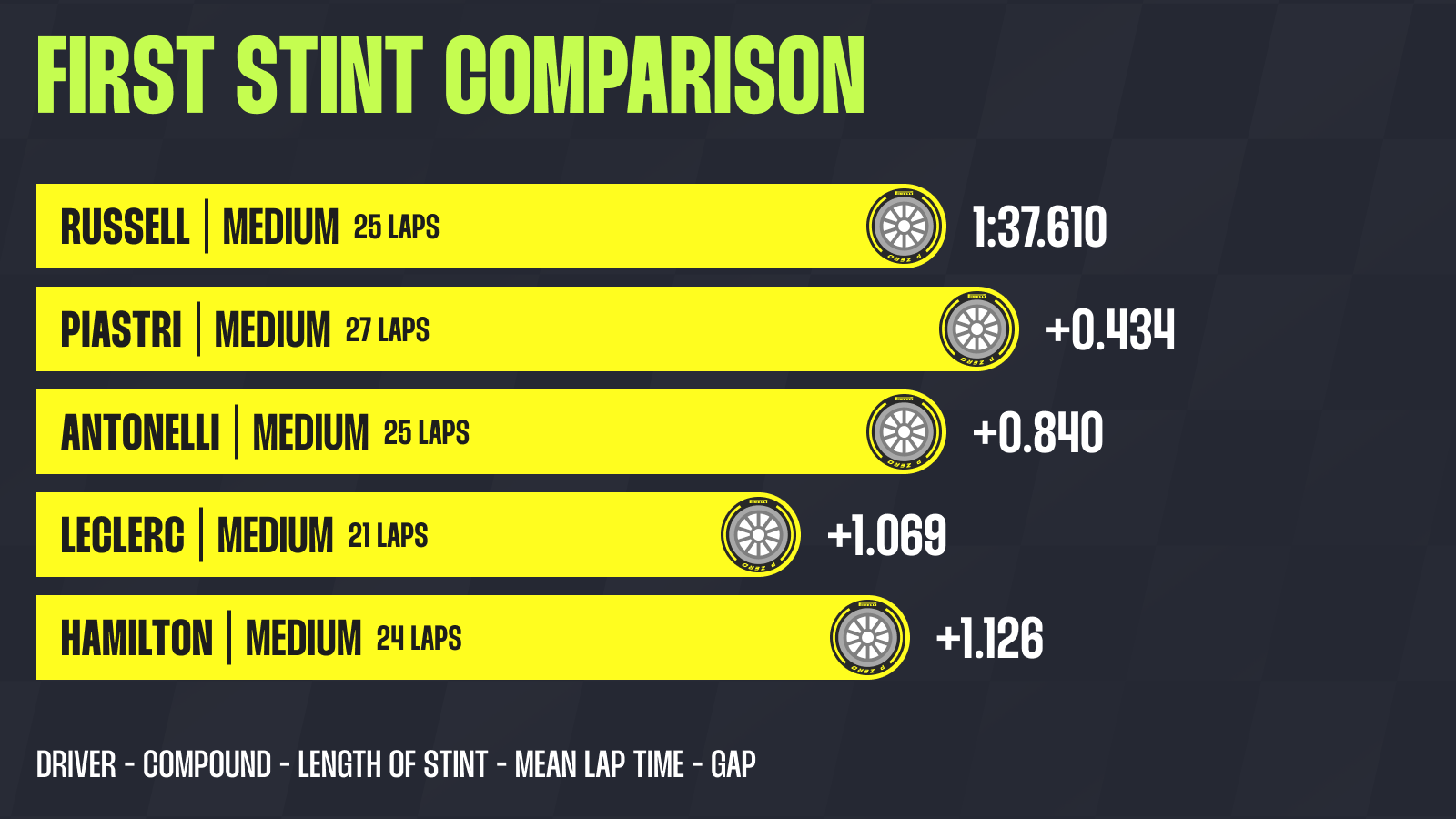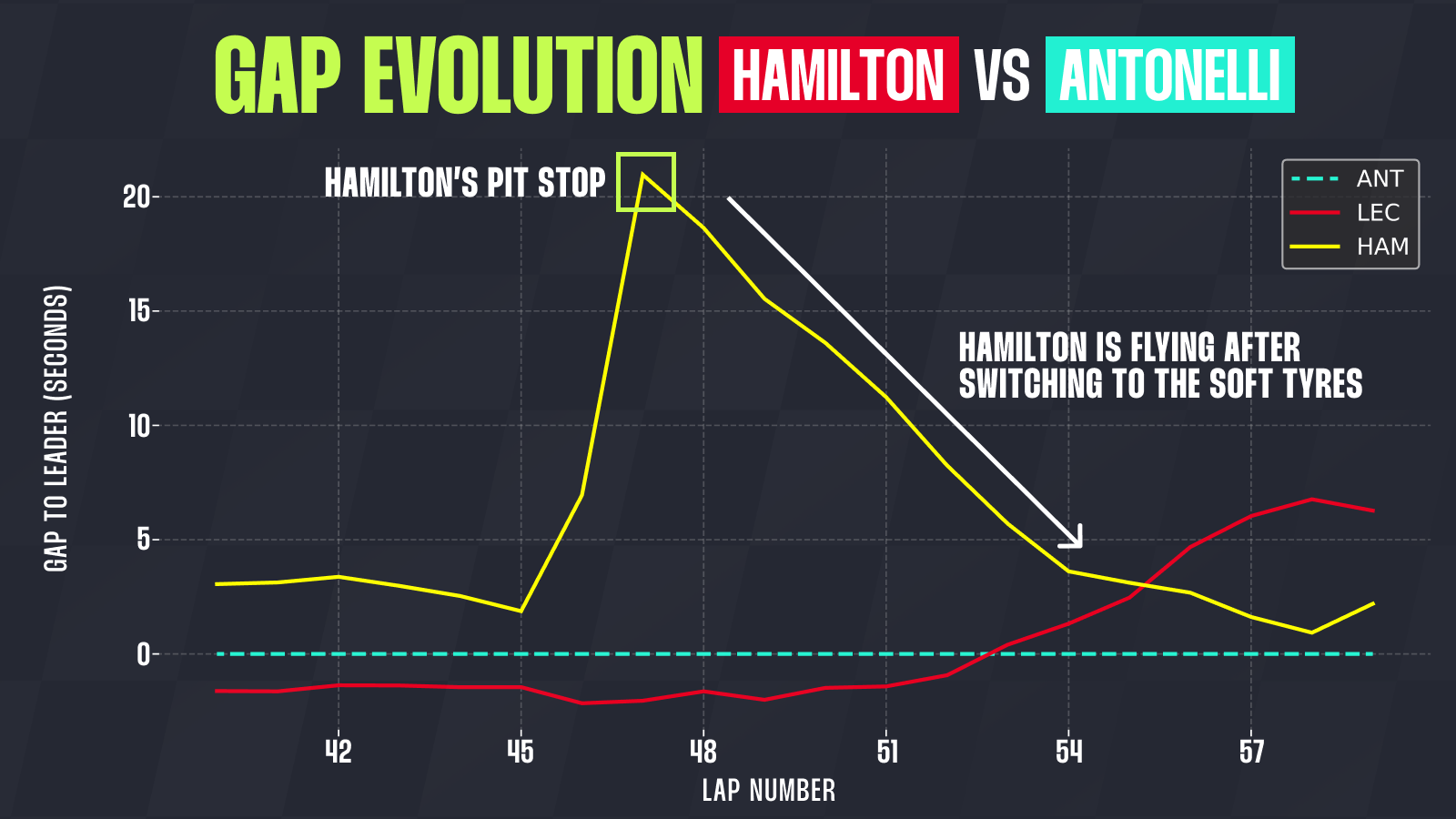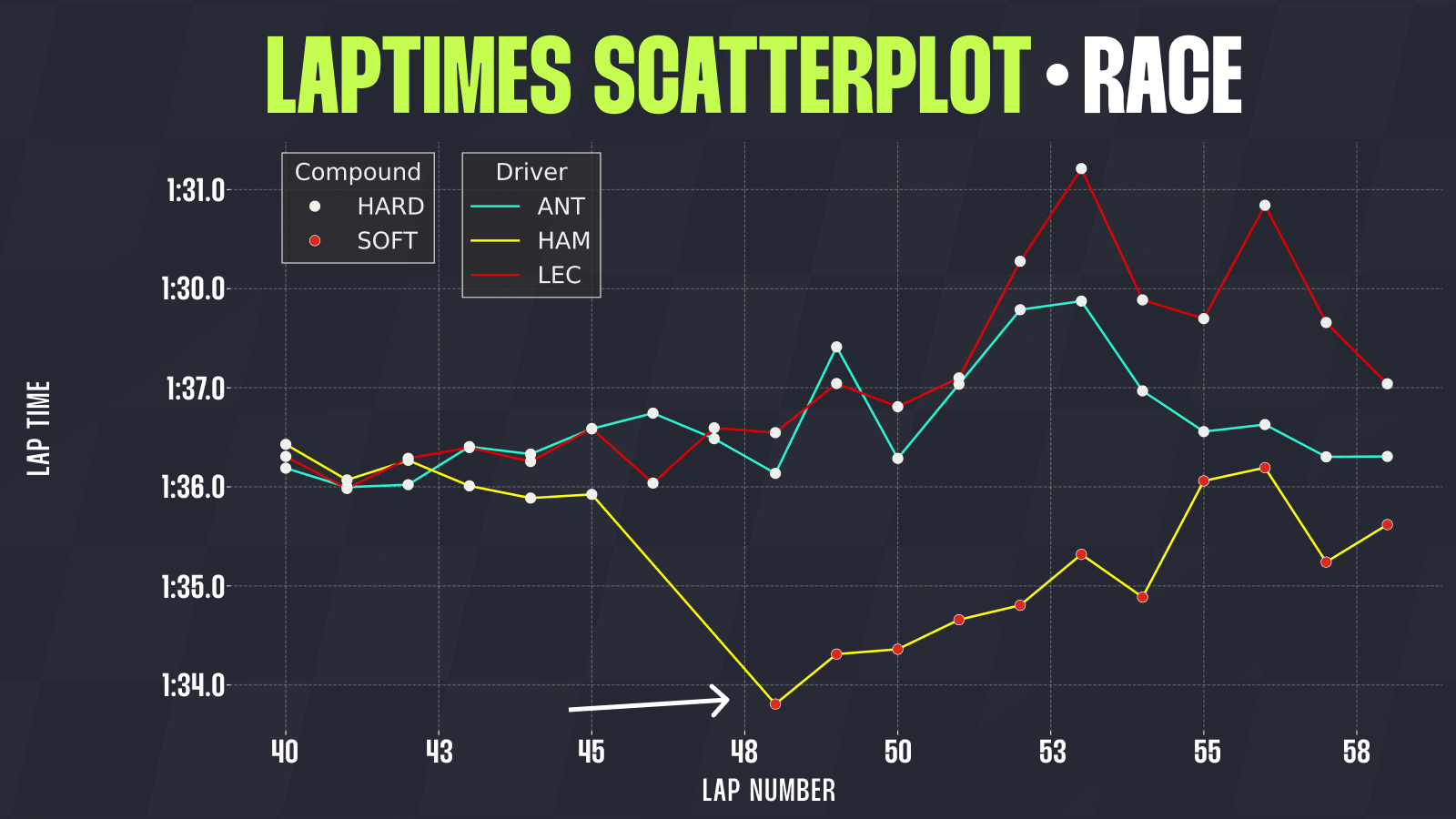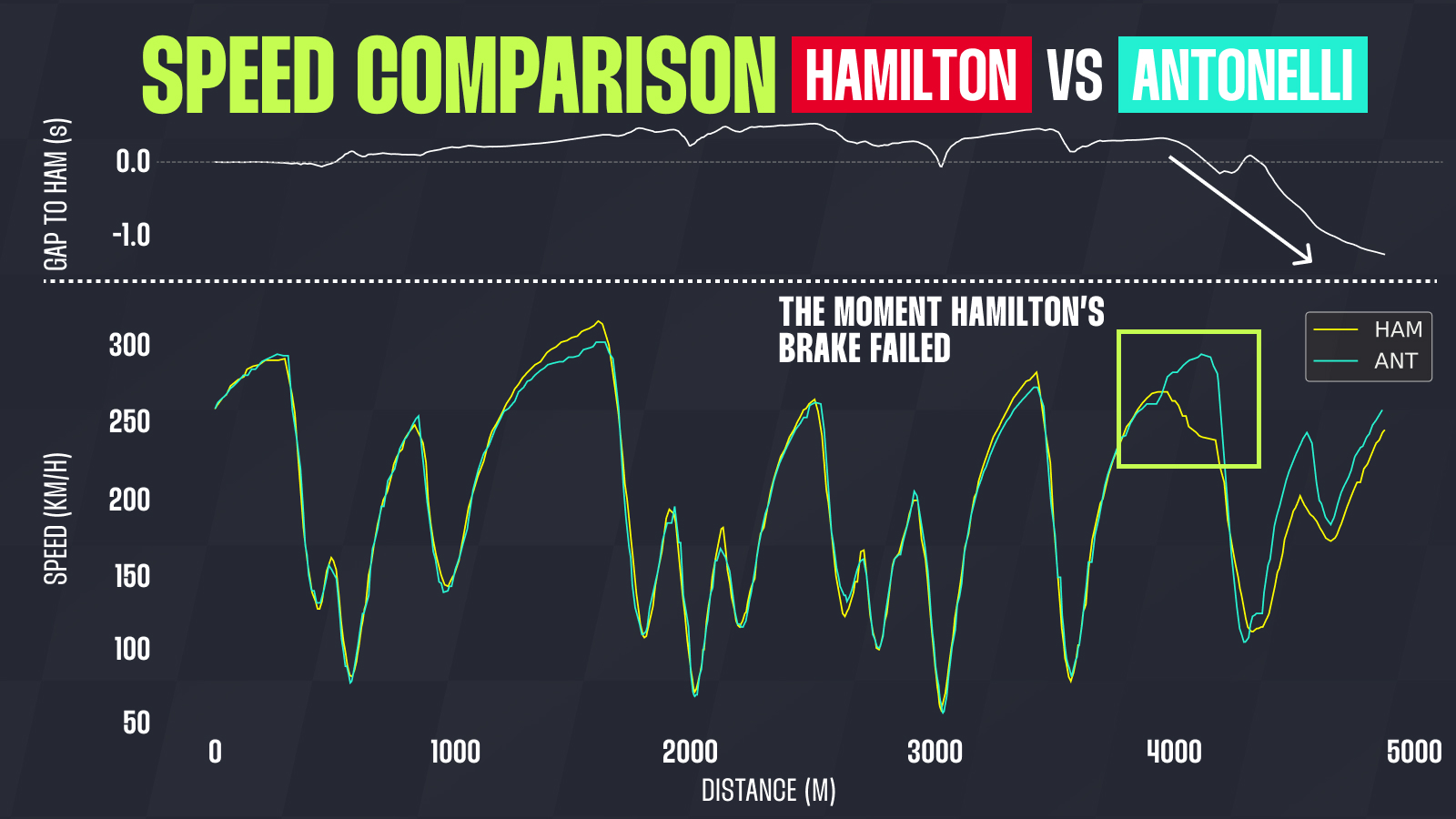Revealed: The true impact of Lewis Hamilton’s brake failure at the Singapore GP

Lewis Hamilton suffered a late-race brake failure in Singapore.
What initially looked like a clever strategic decision that could have earned Lewis Hamilton and his team some extra points in Singapore quickly turned into a race against time — and a desperate effort to simply reach the finish line.
So how much did the seven-time world champion really lose because of the brake issue, and how did he still manage to finish the race? The telemetry data tells the story.
Late Singapore Grand Prix drama for Lewis Hamilton
After a modest qualifying performance for Ferrari, Hamilton started from sixth on the grid — one place ahead of his team-mate. Unfortunately for him, that order didn’t last long. Leclerc got the better start and overtook both Hamilton and Antonelli, who also had a poor launch, in the opening corners.
The first stint on the medium tyres was far from ideal for the Briton. Ferrari struggled to find the right rhythm in the race, and tyre degradation wasn’t behaving as they’d hoped.
Across his 25-lap opening stint, Hamilton was nearly three-tenths of a second per lap slower than Antonelli ahead.
Given that overtaking in Singapore is almost impossible, the first half of the race passed without much on-track action. The top seven drivers stayed in the same positions after the pit stops as they had after the first lap.

Analysis from the Singapore Grand Prix
👉 Singapore GP conclusions: Norris corners Piastri, Russell’s big chance, double Red Bull exit?
👉 Be the first to know by joining PlanetF1’s WhatsApp channel
However, what did change significantly was the gap behind Hamilton, who was then in P7 — Lawson behind him was almost 50 seconds adrift. That led Ferrari to pit Lewis on lap 46, expecting that, with soft tyres and clean air ahead, he could build enough pace to attack Antonelli in front.
After rejoining the track, Hamilton was flying. He was almost two seconds per lap faster than Antonelli and managed to reduce the gap from 23 seconds to just 1.6 within 11 laps.
Meanwhile, Antonelli made a brilliant overtake on Leclerc into Turn 16, so for Lewis to have a real chance to attack the Mercedes driver, Ferrari had to swap their cars around on lap 56.
The chart below shows just how much faster Hamilton’s pace really was. The impact of running in clean air has been a key factor all season — and in Singapore’s heat and humidity, it becomes even more critical.


It may not be a coincidence that Hamilton’s front brake failed precisely as he entered Antonelli’s dirty air.
Telemetry shows that up until around four or five laps before switching to the softs, Lewis had been lifting off the throttle slightly earlier before heavy braking zones — the so-called lift and coast technique — to help manage tyre and brake temperatures.
Once he switched to the softs, that was no longer the case, as he pushed harder to close in on Antonelli. While this can’t be confirmed numerically, it likely raised his front brake temperatures to the limit. Entering the turbulent air behind the Mercedes made cooling much more difficult, and on the approach to Turn 16 — one of the hardest braking zones on the circuit — the failure occurred on lap 60.
With three laps remaining, Hamilton’s chase for P5 became a fight for survival.

Leclerc, not far behind, quickly caught up, and the next car in line, Alonso, was 45 seconds back.
In the first lap after the failure, Hamilton seemed able to brake somewhat effectively, losing only 4.5 seconds to the Aston Martin.
But things deteriorated rapidly. In the penultimate lap, he lost an enormous 32.5 seconds. With just one lap to go, Alonso was only 16 seconds away.
Telemetry shows that Hamilton gave absolutely everything. He drove as fast as the car would allow, and in the end, it was just enough to hang on to P7. Alonso closed in dramatically in the final corners but had no room to make a move.
It’s also clear that, without the brake issue, Lewis had a genuine chance to finish P5 — the pace difference to Antonelli was more than enough.
However, shortly after the race, Hamilton was handed a five-second penalty for exceeding track limits too many times. That dropped him to P8, promoting Alonso to seventh.
While the extra six points Lewis could have earned wouldn’t have changed much in the drivers’ standings, they might prove more meaningful for Ferrari.
With Mercedes showing stronger form recently, Ferrari currently sits third in the Constructors’ Championship, and the fight for that position looks set to be intense until the very end of the season.
Every place in the standings matters, as it brings a larger budget for the following year — a factor that’s becoming increasingly important ahead of the next big regulation change.
Read next: Lando Norris v Oscar Piastri clash set for internal McLaren review





